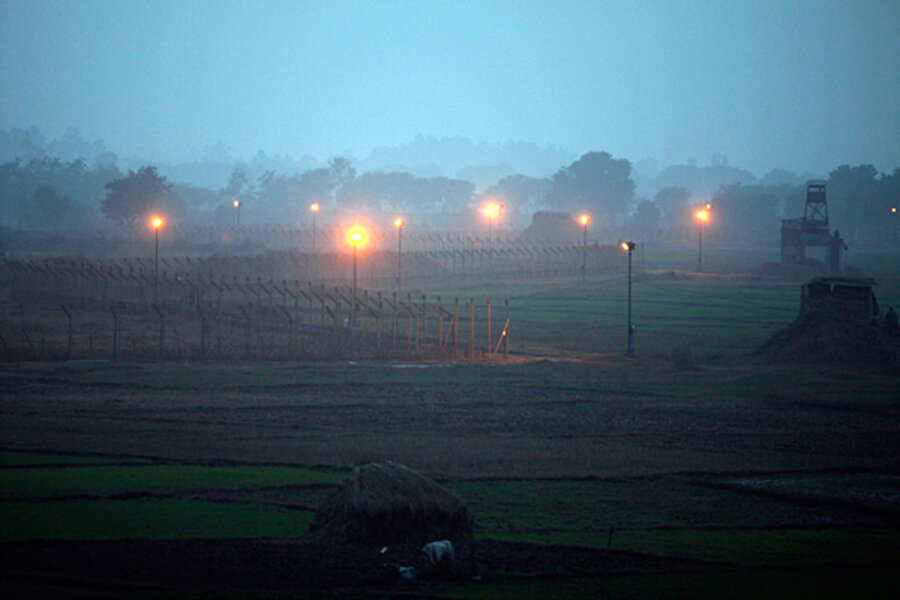Border raids give India-Pakistan peace process a reality check
Loading...
| New Delhi
Two days after the Pakistani Army claimed that a cross-border Indian raid killed a Pakistani soldier and wounded another, the Indian Army claimed that Pakistani soldiers crossed its side of the line in Jammu and Kashmir state today and killed two Indian soldiers.
While cross-border shelling along the 435-mile Line of Control that divides the disputed Jammu and Kashmir region between the two countries is not rare, the killing of soldiers has come as a surprise: Pakistan and India are in the middle of a major peace process, and most cease-fire violations happen during the summer rather than the difficult winter in the mountainous region.
The skirmish has prompted many to ask “why now?”
Analysts in India see these events in the light of recent reports that the Pakistani military has adopted a new doctrine that states, significantly, that the Taliban and not India is Pakistan’s primary threat.
“These cease-fire violations could be the localized decision of a divisional brigadier or commander unhappy with the India-Pakistan thaw,” says military commentator Ajai Shukla, a former Indian Army officer who has served at the Line of Control. “It is significant that the Pakistani Army has transferred 70,000 soldiers from the Indian border to counterterrorism efforts on the Afghan border in the last two years,” he points out, adding: “It is very likely that there are officers who do not think this is in Pakistan’s best interest.”
Referring to rogue military or militants, Raza Rumi of the Pakistani think tank The Jinnah Institute, says, “While the Pakistani government and military have both tried their utmost to continue the peace process, there may be nonstate actors who could be riled up by the prospect of imminent unemployment.”
While the Pakistani military denied "Indian allegations of unprovoked firing" to Reuters, an Indian Army spokesperson described Tuesday's events as "a serious escalation to the continuing series of cease-fire violations and infiltration attempts."
Many see the killings as a retaliation for the death of the Pakistani soldier on Sunday. As the Pakistan Foreign Office protested the killing by summoning the Indian Deputy High Commissioner, the Indian Army said it had responded to heavy firing from the Pakistani side that destroyed one civilian house on the Indian side.
"We believe it was clearly an attempt on their part to facilitate infiltration of militants," spokesperson Col. Brijesh Pandey said.
But Pakistani military analyst Ayesha Siddiqa says that the Line of Control skirmish and the new Pakistani military doctrine are both being overplayed by the Indian media.
“The talk of a new military doctrine is based on questionable reports,” she says, adding, “The peace process has not achieved anything substantial so far and it is obvious that both peace and anti-peace lobbies would be at work. It is important to not see small tremors as major shifts. The Pakistani Army may realize that the scope for adventurism in Kashmir is limited but India remains the major conventional military threat for it.”
The United States expressed concern Monday about the skirmish. "We urge both sides to take steps to end exchanges of fire and to resume normal trade and travel across the Line of Control," State Department spokeswoman Victoria Nuland told reporters.







